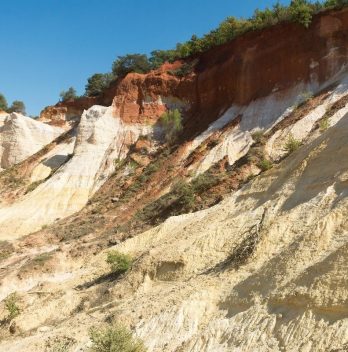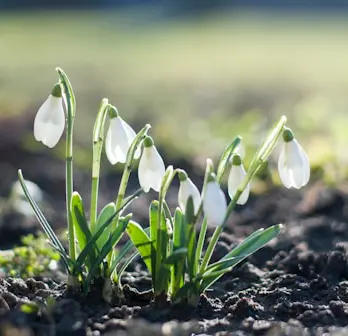Most farmers do not have a proper understanding of what azomite is and how to use it in gardening, especially if they practice organic farming.
The continuous propagation and leaching effects of water deplete the essential minerals and micro-nutrients from the soils. Such soils remain weak and cannot support the production of fruits and vegetables.
Azomite minerals contain micronutrients that supplement the
What is Azomite?
Azomite is a naturally mined mineral product that is ready to use. It’s a unique rock that comes from a mine in central Utah. Azomite requires no mixing or special preparation before use. It is derived from volcano ash that spewed out millions of years ago. The “What is Azomite” question is now answered, but for more clarification, see the video below.
What is Azomite Video: Azomite Organic Growing Explained.
Azomite contains the widest range of minerals of all rock dust in the world. It provides plants with 70% essential elements, including magnesium, calcium, potassium, and silicon, which are necessary for plant growth.
Facts About Azomite Fertilizer
- It’s a natural mineral – 100% natural with no fillers or additives
- Does not contain any harmful elements
- Requires no special preparation before use
- It’s odorless – very friendly to use
- Does not restrict water penetration or aeration
- Is easily broken down and absorbed into the
soil - Does not burn plants
How To Use Azomite For Plants
Azomite should accompany compost, manures, hummus, or other fertilizers. It provides additional nitrogen, potassium, and phosphorous. It can either be lightly turned into the
Azomite Application Rate
- When Planting: Use ¼ cup per plant. For larger areas, apply 44 lb per acre based on rows that are approximately 18” apart with 12” apart.
- For House Plants: Use 1 teaspoon per 2-inch pot with potting
soil before planting. Use 1 teaspoon in a 1-gallon watering can quarterly. - For Gardens: Apply 1 lb per 25 root feet or 10 lbs per 100 square feet by watering or top dressing. If planting in rows, mix into the
soil along the rows at a rate of 1 lb per 25 ft of row. If using an established bed, sprinkle around each plant.

- For Trees: Apply 1 to 5 lbs each, depending on the tree size. For grapes, roses, and shrubs, use 1 lb per plant, spread it around the root zone, and rake it.
- New Lawns: use 5 lb per 1000 square feet.
- Established Lawns: use 3 lbs per 100 square feet. Apply once per year in spring or fall, broadcasting evenly and watering it.
- When Transplanting Seedlings: Add 1-3 tablespoons per seedling
Where to Buy Azomite
Getting the right azomite is essential. Beat the quacks by buying from the company or finding sellers on Amazon. Be sure to get the right product in its purest form for excellent results.
AZOMITE can improve plant and root system growth, crop yields, and quality as well as re-mineralize nutrient depleted soils
FAQs What is Azomite, and how is it used in the garden?
How Often Should I Apply Azomite?
The type of plants you are growing, and the specific
It is important not to overapply Azomite. This can lead to excess nutrients in the
How Long Does it Take for Azomite to Work?
The amount of time it takes for Azomite to affect your plants will depend on a variety of factors. These include the type of plants you are growing and your specific
If you use Azomite as a
What Color is Azomite?
Azomite is a mineral product composed of minerals and trace elements. It is typically light brown or tan in color and has a granular or powdery texture. Depending on the specific minerals and trace elements it contains, azomite can also sometimes have a reddish or orange tint.
Generally, the color of Azomite is not important. Trace elements and minerals benefit plants.
What is The pH of Azomite?
The pH of Azomite is not a fixed value. It can vary depending on the specific minerals and trace elements that it contains. Generally, Azomite is considered t be neutral to slightly alkaline. Its pH can range from
6.5 to 8.0.
The
Does Azomite Have Iron in It?
Azomite does not contain iron as a standalone ingredient, but it may have small amounts of it as a trace element. Iron is an essential nutrient for plant growth and is required in tiny quantities to produce chlorophyll and ensure the proper functioning of enzymes.
While Azomite does not contain large amounts of iron, it can still help plants grow and thrive with the trace amounts it has. Additionally, the other minerals and trace elements present in Azomite can help improve the
Does Azomite Expire?
Azomite does not have an expiration date. It is a natural mineral product that does not spoil or go bad over time. The minerals and trace elements in it do not break down or lose their effectiveness over time.
However, Azomite may lose some potency if it is stored improperly or exposed to extreme conditions such as very high temperatures or prolonged exposure to moisture. It is generally best to keep Azomite in a cool, dry place and to use it within a few years of purchase to ensure that it is at its full potency.
If you are unsure whether your Azomite is still effective, you can consult the manufacturer or a local gardening expert for more information.
How Much Azomite is Needed Per Cubic Foot of Soil ?
The amount of Azomite you should use per cubic foot of
However, this is just a general guideline. You may need to adjust the amount of Azomite you use based on the specific needs of your plants and
What is Azomite and how is it used in gardening?
Azomite is a natural mineral product used as a
What are the benefits of using Azomite in soil ?
Azomite improves
How do you apply Azomite to plants?
You can apply Azomite by sprinkling it on the
Is Azomite safe for organic gardening?
Yes, Azomite is OMRI-listed and approved for organic gardening.
What nutrients are found in Azomite?
Azomite provides minerals like calcium, magnesium, potassium, and iron.
How much Azomite should I add to my soil ?
Typically, you apply 1 to 2 pounds of Azomite per 10 square feet for gardens or ½ to 1 pound per inch of pot diameter for potted plants.
Can Azomite improve crop yield?
Azomite can improve crop yield by enhancing nutrient availability and plant health, resulting in more robust growth.
Is Azomite the same as rock dust?
Azomite is a type of rock dust, but it’s unique because it originates from volcanic ash deposits, making it rich in trace minerals.
Conclusion
Nature has a way of healing itself if we give it that chance. Volcanic eruptions are dangerous, especially to those living around the area, but what a blessing in disguise to get the volcanic ash to feed the

Brian believes the best days are spent outside with soil on your hands. He finds his rhythm in the details of the garden—from carefully tending to established plants to the excitement of propagating new varieties. A true outdoor enthusiast, Brian is here to swap stories, share advice, and celebrate the rewarding work of growing.





